

ANDERS + SUMMIT A MERGER MANUAL ANDERS CPA s + ADVISORS SUMMIT CPA GROUP Summit CPA Group Brand Style Guide PRIMARY LOGO (2 COLOR) ALTERNATE LOGO (1 COLOR) COLORS ST. PATRICK’S BLUE #1F3D7D X11 GRAY #BDBEC0 BLACK BEAN #390B0C MAASTRICHT BLUE # 011638 KEPPEL # 419EA4 FONT PREFERENCES Helvetica Light Gil Sans Bold Calibri (Body) SAMPLE IMAGES

This is an “under-the-hood” view of a notyour-run-of-themill merger.
As a result, we’ll become stronger not just in our respective areas of expertise but, even more exciting, we’ll strengthen one another by sharing that expertise to better serve our clients and continue to make positive changes to the industry.”
In 2021, Anders—a large, St. Louis-based brick-and-mortar firm—and Summit—a fully distributed, unconventional, smaller firm—took their first steps towards merging. And now, as 2022 draws to a close, the two companies are in the thick of the process of integration.

We entered the merger process with a list of must-haves. In terms of our day-to-day, we wanted to take care of our Summit team and continue to operate as an independent unit—essentially keeping our machine intact, and using the merger to accelerate our growth trajectory. To reach such a goal, we knew we needed to maintain our national brand, which provides two main and equal benefits: finding prospects and finding talent. We’ve put a thought-leadership marketing engine in motion that attracts clients across the country. At the same time, the national brand helps recruit talent coast-to-coast without geographical limits—a must-have in today’s tight talent market.
In terms of the structure of the merger itself, we wanted to create an incentivized buy-out that motivates both sides to continue pushing toward those goals, and we wanted a seat at the table for Summit’s co-founders, Jody Grunden and Adam Hale, so that they could be a central part of the decision-making process moving forward.
It’s been fast, it’s been intense, and it’s been—at times—bumpy. That’s why we wanted to tell you the story of how and why it happened: to share our thinking behind this merger and our approach to the challenges that we’ve faced along the way. Anders and Summit are different, no question, and we see this merger as an opportunity to leverage those differences. As a result, we’ll become stronger not just in our respective areas of expertise but, even more exciting, we’ll strengthen one another by sharing that expertise to better serve our clients and continue to make positive changes to the industry.
Whether you’re interested in merging yourself or are just curious to understand the thinking behind the Anders + Summit merger, we invite you to read the story from the perspective of Jody Grunden, Summit’s co-founder and former CEO, as well as key players on the Summit and Anders teams.
With most accounting firm mergers or acquisitions, one firm is looking to acquire more of what they already do. But with Anders CPAs + Advisors (Anders) and Summit CPA Group (Summit), this is not that kind of merger. PREFACE Summit CPA Group Brand Style Guide PRIMARY LOGO (2 COLOR) ALTERNATE LOGO (1 COLOR) COLORS ST. PATRICK’S BLUE #1F3D7D X11 GRAY #BDBEC0 BLACK BEAN #390B0C MAASTRICHT BLUE # 011638 KEPPEL # 419EA4 FONT PREFERENCES Helvetica Light Gil Sans Bold Calibri (Body) SAMPLE IMAGES “ Anders + Summit Merger Manual P. 3
PREFACE
With most accounting firm mergers or acquisitions, one firm is looking to acquire more of what they already do.
But with Anders CPAs + Advisors (Anders) and Summit CPA Group (Summit), this is not that kind of merger.

This is an “under-the-hood” view of a notyour-run-of-themill merger.
Anders—a large, St. Louis-based brickand-mortar firm—and Summit—a fully distributed, unconventional, smaller firm— took their first steps towards merging.
And now, as 2022 draws to a close, the two companies are in the thick of the process of integration.
We entered the merger process with a list of must-haves. In terms of our day-to-day, we wanted to take care of our Summit team and continue to operate as an independent unit— essentially keeping our machine intact, and using the merger to accelerate our growth trajectory. To reach such a goal, we knew we needed to maintain our national brand, which provides two main and equal benefits: finding prospects and finding talent. We’ve put a thought-leadership marketing engine in motion that attracts clients across the country. At the same time, the national brand helps recruit talent coast-to-coast without geographical limits—a must-have in today’s tight talent market.
In terms of the structure of the merger itself, we wanted to create an incen tivized buy-out that motivates both sides to continue pushing toward those goals, and we wanted a seat at the table for Summit’s co-founders, Jody Grunden and Adam Hale, so that they could be a central part of the decisionmaking process moving forward.
It’s been fast, it’s been intense, and it’s been—at times—bumpy. That’s why we wanted to tell you the story of how and why it happened: to share our thinking behind this merger and our approach to the challenges that we’ve faced along the way. Anders and Summit are different, no question,
and we see this merger as an opportunity to leverage those differences. As a result, we’ll become stronger not just in our respective areas of expertise but, even more exciting, we’ll strengthen one another by sharing that expertise to better serve our clients and continue to make positive changes to the industry.
Whether you’re interested in merging yourself or are just curious to understand the thinking behind the Anders + Summit merger, we invite you to read the story from the perspective of Jody Grunden, Summit’s co-founder and former CEO, as well as key players on the Summit and Anders teams.

Merger ManualAnders + Summit P. 5 Summit CPA Group Brand Style Guide PRIMARY LOGO (2 COLOR) ALTERNATE LOGO (1 COLOR) COLORS ST. PATRICK’S BLUE #1F3D7D X11 GRAY #BDBEC0 BLACK BEAN #390B0C MAASTRICHT BLUE # 011638 KEPPEL # 419EA4 FONT PREFERENCES Helvetica Light Gil Sans Bold Calibri (Body) SAMPLE IMAGES
IN 2021
SUMMIT LEADERSHIP
Since Summit is fully distributed, the firm has the advantage to span geographic locations to find the best candidates for their team of directors. Each director has a special focus at Summit. They provide leadership to their teams, ensuring their departments are running effectively and contributing to the overall mission of the organization.

Meet the Team Founders JODY GRUNDEN CEO & Co-Founder of Summit ADAM HALE COO & Co-Founder of Summit Directors DAVE DANIC Director of Tax JAKE GRIMM Director of Technology JAMIE NAU Director of Accounting KELLY SCHUKNECHT Director of Marketing KIM MOORE Director of Audit Additional Steering Committee Members JOSH JEANS People Operations Strategist ZACH MONTROY People, Team & Organizational Strategist Summit CPA Group Brand Style Guide PRIMARY LOGO (2 COLOR) ALTERNATE LOGO (1 COLOR) COLORS ST. PATRICK’S BLUE #1F3D7D X11 GRAY #BDBEC0 BLACK BEAN #390B0C MAASTRICHT BLUE # 011638 KEPPEL # 419EA4 FONT PREFERENCES Helvetica Light Gil Sans Bold Calibri (Body) SAMPLE IMAGES
As the founder

that
focus
was instrumental
connecting Anders
to serve as an
as the
grows.
ANDERS LEADERSHIP
Founded in 1965, Anders has grown steadily and can attribute much of its success to its employees and partners—some of whom have more than 20 years of service with the firm
ROBERT
J. MINKLER, SR., CPA, Founding Partner
Anders + Summit Merger Manual
P. 7 Executive Committee MICHAEL STAFFORD, CPA Partner and Chief Operating Officer MARK HINSEN, CPA/CGMA Partner and Director + Audit and Assurance ROBERT MINKLER, JR., CPA/CGMA Managing Partner DOUGLAS MUELLER, CPA/PFS Partner and Director + Tax KEVIN SUMMERS, JD, CPA/ABV/CFF, CVA Partner and Director + Forensic, Valuation and Litigation ROBERT BERGER CPA/CGMA, Partner + Tax Additional Steering Committee Members DAVE HARTLEY, CPA, CISA Partner and Director + Advisory SCOTT HOFFMANN, CPA Partner and Director + Accounting JEN SIDES Chief People Officer LINDSAY SUELMANN Marketing Director THERESA STEARNS Chief Information Officer
Anthony
Zecca Founder of Growth Path Partners LLC
of Growth Path Partners LLC, a firm
focuses on leadership, strategy, and growth consulting for organizations with a
on professional service firms, Anthony
in
and Summit;he continues
advisor
merger solidifies and
SUMMIT LEADERSHIP
Since Summit is fully distributed, the firm has the advantage to span geographic locations to find the best candidates for their team of directors. Each director has a special focus at Summit. They provide leadership to their teams, ensuring their departments are running effectively and contributing to the overall mission of the organization.
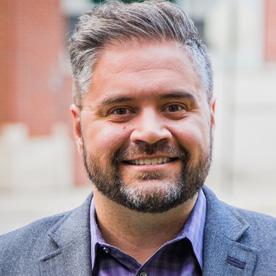
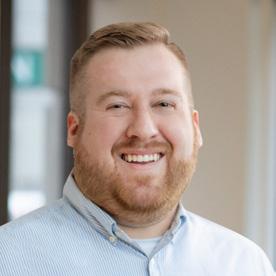
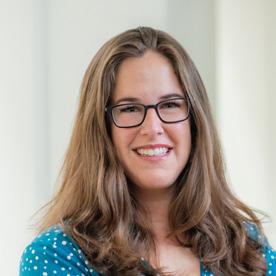
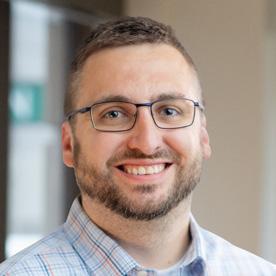
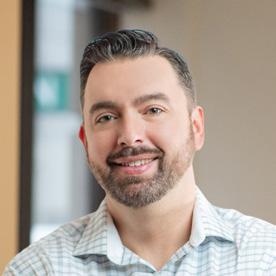
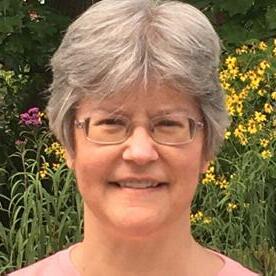




Meet the Team JODY GRUNDEN CEO & Co-Founder of Summit ADAM HALE COO & Co-Founder of Summit DAVE DANIC Director of Tax JAKE GRIMM Director of Technology JAMIE NAU Director of Accounting KELLY SCHUKNECHT Director of Marketing KIM MOORE Director of Audit JOSH JEANS People Operations Strategist ZACH MONTROY People, Team & Organizational Strategis t Summit CPA Group Brand Style Guide PRIMARY LOGO (2 COLOR) ALTERNATE LOGO (1 COLOR) COLORS ST. PATRICK’S BLUE #1F3D7D X11 GRAY #BDBEC0 BLACK BEAN #390B0C MAASTRICHT BLUE # 011638 KEPPEL # 419EA4 FONT PREFERENCES Helvetica Light Gil Sans Bold Calibri (Body) SAMPLE IMAGES Founders Additional Steering Committee MembersDirectors
Founder of Growth Path Partners
As the founder of Growth Path Partners LLC, a firm that focuses on leadership, strategy, and growth consulting for organizations with a focus on professional service firms, Anthony was instrumental in connecting Anders and Summit;he continues to serve as an advisor as the merger solidifies and grows.
ANDERS LEADERSHIP
Founded in 1965, Anders has grown steadily and can attribute much of its success to its employees and partners—some of whom have more than 20 years of service with the firm
ROBERT J. MINKLER, SR., CPA, Founding Partner
Additional Steering Committee Members
DAVE HARTLEY CPA, CISA
and Director + Advisory
HOFFMANN, CPA
and Director
Accounting
Executive Committee
MICHAEL STAFFORD, CPA
and Chief Operating Officer
MARK HINSEN, CPA/CGMA
and Director + Audit and Assurance
ROBERT MINKLER, JR., CPA/CGMA Managing Partner
DOUGLAS MUELLER, CPA/PFS
and Director + Tax
KEVIN SUMMERS, JD, CPA/ ABV/CFF, CVA Partner and Director + Forensic, Valuation and Litigation
ROBERT BERGER CPA/CGMA
+ Tax

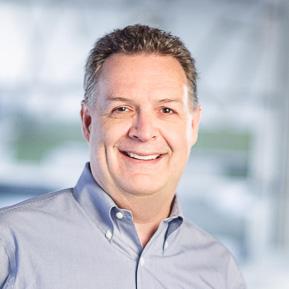
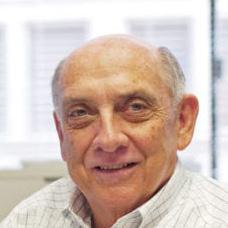
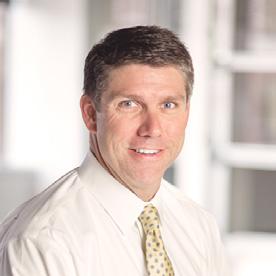
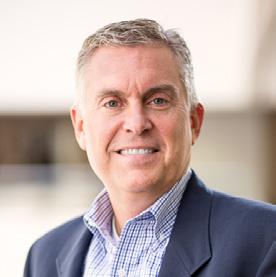
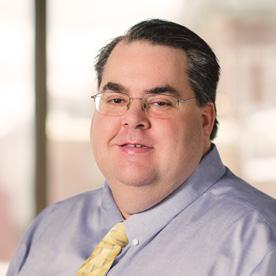
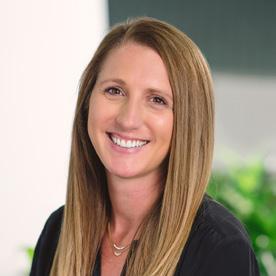
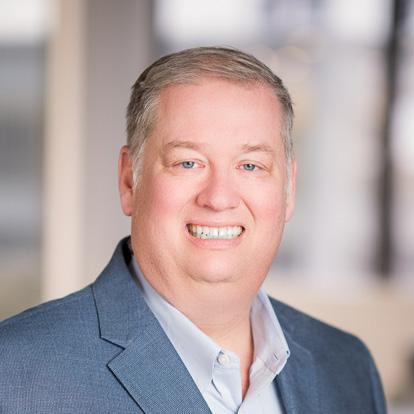
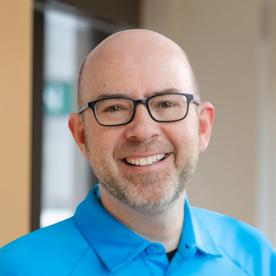

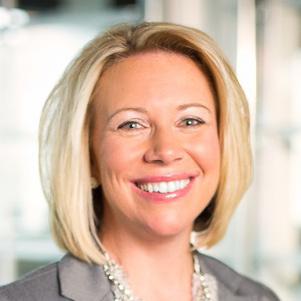

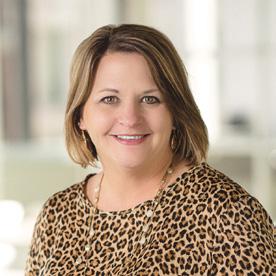 Anders + Summit Merger Manual
Anders + Summit Merger Manual
P. 9
Partner
Partner
Partner
Partner
Partner
SCOTT
Partner
+
JEN SIDES
Chief
People
Officer
LINDSAY SUELMANN
Marketing Director
THERESA STEARNS
Chief Information Officer
Anthony Zecca
LLC
“Traditional accounting is boring.”

of our business came to us from industries such as construction, consulting, healthcare and manufacturing,because they genuinely connected to our message and our offerings. We didn’t have to convince them; the fit was apparent.


Accounting Done Differently A new communication strategy 13 Virtual 401(k) Audits 14 Value-Based Billing 15 Growing Virtually 15 Cutting-edge Tech 16 Leading with Values 16 Changing the Industry 17 SUMMIT: Summit CPA Group Brand Style Guide PRIMARY LOGO (2 COLOR) ALTERNATE LOGO (1 COLOR) COLORS ST. PATRICK’S BLUE #1F3D7D X11 GRAY #BDBEC0 BLACK BEAN #390B0C MAASTRICHT BLUE # 011638 KEPPEL # 419EA4 FONT PREFERENCES Helvetica Light Gil Sans Bold Calibri (Body) SAMPLE IMAGES Anders + Summit Merger Manual P. 11
4 %
ACCOUNTING DONE DIFFERENTLY
I didn’t want to run the proverbial rat race. I didn’t want to wear a suit and tie. I didn’t want to have a traditional busy season that comes with the CPA territory. I didn’t want to go to an office for 40+ hours a week. And I didn’t want to burn out.

Instead, I wanted to ignite a passion for business growth through accounting and financial services. I wanted to change the way people think about accounting. I wanted to do something that mattered. I wanted to walk alongside a business owner and help them grow their business—to form relationships with them, not just look at their books once a month. I wanted flexibility in my life so I could coach my kids’ hockey teams.
Instead, I wanted to ignite a passion for business growth through accounting and financial services. I wanted to change the way people think about accounting. I wanted to do something that mattered. I wanted to walk alongside a business owner and help them grow their business—to form relationships with them, not just look at their books once a month. I wanted flexibility in my life so I could coach my kids’ hockey teams.
With a clear vision of what I wanted and what I didn’t, my business partner, Adam Hale, and I set out on an uncharted mission. We didn’t have a map or a compass; all we had
My vision for Summit CPA Group 20 years ago was grounded in a desire to be different—to create something that nobody else was doing in the industry. I started by focusing on what I didn’t want.
You don’t need to spend years in corporate accounting to discover that the stereotypes are right on: Traditional accounting is boring. It’s boring for the clients and, to be frank, it’s not much more exciting for the accountants. But why does that have to be the case?”
You don’t need to spend years in corporate accounting to discover that the stereotypes are right on: Traditional accounting is boring. It’s boring for the clients and, to be frank, it’s not much more exciting for the accountants. But why does that have to be the case? That was our first challenge to solve. We started by moving beyond the traditional accounting services of filing tax returns and historical financials that would make our clients’ nod off in their chairs. But it wasn’t just the jargon that kept them from getting fully engaged; it was the focus on the past. Our clients wanted to grow their business, see how it stacks up against themselves and their peers, and look to the future.
So, in response, we created dynamic forecasting to help them see it more clearly by looking at long-term and short-term cash flow. We figured out how to use the data to help them understand their story, to allow them to keep a finger on the pulse of their business and be proactive about their financial health. Now, all of a sudden, clients didn’t see us as snoozy accountants, but business performance coaches who understood their finances, came into their business and made them better.
Once we made that shift, our clients started looking forward to talking to us on a regular basis. They even started to ask for more meetings. So we offered weekly strategy sessions where we could dig into their challenges and figure out how to help them grow faster. With this approach, we had more client time than ever before, which was one of our main goals when Adam and I left our traditional firms and struck out on our own.
Then tax time came around, and another benefit of weekly meetings became clear: Because we were already on top of our clients’ financials, there was no last-minute scramble. We didn’t have to burn the midnight oil (or give up hockey season) to get their filings done.
And so our Virtual CFO (VCFO) services evolved. It was a name that made people scratch their heads when I put it on our website back in the early 2000s—and it took four whole years before we found a client (Rhode-Island-based Lullabot) who was ready to take us up on the “V” part. But once they signed on and started spreading the word, our growth skyrocketed. Another win-win: We were growing because we were able to multiply our client base and help our clients grow at the same time.
A new communication strategy
Our vision of Virtual CFO services was so new that it was impossible to sell traditionally. No one knew what it was. When a business hired an accountant, they wanted an accountant to show up at their door, not a VCFO to appear on their computer screen.
In order to succeed at doing things our own way, we needed a communication strategy that would educate the public.
That’s how we developed our thought-leadership approach to marketing. The blog and, ultimately, the podcast series, grew out of that need to get the word out that we had this new vision for financial services.
From our website to how we introduce ourselves to a client in a virtual meeting—everything had to be branded in the same way, to reflect our non-tradi tional approach. Clients had been conditioned to expect in-person meetings; we had to show them that our virtual approach wasn’t simply a good substitute—it was a strategic advantage.
Our thought-leadership communication strategy is an essential part of this approach to attracting clients who aren’t looking for a traditional accounting firm to step in and just do their books.
Our clients want a visionary, someone who can sit alongside
them as an entrepreneur: a sounding board who partners with them, to guide them and help them make decisions.
That’s the big differentiator, so we designed our communications—our daily blogs, podcasts, and speaking engagements – to show the level of thinking Summit provides, and get our audience excited about the possibility of benefitting from that level of partnership.
Because we were getting to be so well known nationally, we were attracting clients outside of our target: We focused our thought leadership on digital agencies, but a full 40% of our business came to us from industries such as construction, consulting, healthcare and manufacturing, because they genuinely connected to our message and our offerings. We didn’t have to convince them; the fit was apparent.
Anders + Summit Merger Manual P. 13
Virtual 401(k) Audits
When we started to gain traction in the Virtual CFO space, there were people who said we got lucky, that we were able to go against the grain and work remotely in that one specific niche because of the nature of the VCFO service. They said, “you can’t do 401(k) audits remotely. No one’s going to hire you to do that.” But we decided to find out whether we could get the VCFO model to work in other areas of accounting, and we bucked the system again.
It started with one audit, and it blew up into just under 200. Everyone in the industry said, “You can’t get 401(k) audits by doing them virtually, by having a national presence, or by doing podcasts and blogs. You get them with an outbound sales approach, traditionally through the Request For Proposal (RFP) process.” And that’s not how we did it, and we were very successful: 401(k) audits were a million dollar stream of income when we were a $10 million company.
Our thought-leadership approach creates demand for this service, so we have clients who follow our podcasts and blogs—maybe for months—that call us up and initiate the sales process. With this kind of inbound marketing approach, our accountants don’t need to go out and make sales pitches. When we hire someone, they get handed a book of clients; they aren’t expected to land them, which is the industry standard. That means they have more time to spend on delivering expert service and not honing their sales skills. And, starting from their first meeting, they can approach their client as partners, not as salespeople.
One of our earliest clients called us up and said, “Hey, I know you don’t need to do my HUD audit, but I really enjoyed working with you. I like your style. I like the fact that you don’t have to be in my backyard. Can you do our 401k audits?”
So we dug in, spent three times the amount of time we should have, and started to figure it out, with the help of consultants who reviewed our process. As we learned, we started putting out information, writing articles, and sharing what we were learning.
It turned out to be the perfect niche. Unlike HUD audits, 401(k) audit season doesn’t overlap with tax season, so we were able to distribute the workload more evenly throughout the year.
Companies are required to do 401(k) audits when they have 100-plus employees, so they’re established companies with systems, a payroll
BUT THEN WE GOT A PHONE CALL.
company, and high quality data—which makes them straightforward to conduct. It’s also a great market because when a company crosses that 100-employee threshold, they’re having to educate themselves about the 401(k) process for the first time. That means that when those clients would search, “Why do I need a 401(k) audit?” online, they’d find our articles and, even though we might have been halfway across the country, we could end up working together.
In our early stages, nobody did 401(k) audits virtually, so we had a big competitive advantage. Not only were we doing something unique, we were putting out a lot of content to educate clients, and we had a transparent billing model. People could go on our website, click a button, answer a few screening questions, and get a quote. They didn’t have to wait two to four weeks to hear what the quote might be.
-ADAM HALE
We got into audits through HUD audits for mortgagees. We found it to be a scalable business, because we didn’t have to be on-site; we could do it all throughout the United States. We started putting a lot of effort and marketing dollars, growing to 40 or 50 audits, and then the federal government decided to let the big banks swallow up the little mortgage companies and oversee them. The revenue center we were building vanished—literally—overnight.
VALUE-BASED BILLING
From the very beginning, we did things differently. But every game-changing idea we’ve implemented—from what we offer to how we deliver it—has to meet this standard: We provide a more valuable service to the client and improve our team’s experience. You don’t have to sacrifice one to get the other. In fact, that’s what makes a business great.
Take our decision to move away from the traditional hourly billing model to valuebased, weekly billing. Hourly billing felt like a lose-lose. We couldn’t predict our cash flow, wasted time chasing accounts receivable and risked compromising our relationship with the client every time we sent out a bill. Would they complain about every .25 hours? Would they laugh at how cheap we seemed? Instead of being able to have substantive conversations about pressing issues, we had to act as a project manager and bill collector. “Hey, I want to have this serious conversation with you, but first you owe me $30,000” is a sentence we were able to remove from our routine at Summit.
Once we figured out a price that wasn’t ridiculously low, we moved one step closer to where we wanted to be—in the clients’ corner, doing the work we do best, rather than hovering by the mailbox, waiting for the next check.

Growing Virtually
Our decision to become the first completely virtual CPA firm—fully distributed in 2013— was motivated by the same outcome: to help our clients grow their business even more efficiently and improve our work environment.

It took a little while to convince everyone to come along for the ride, but the switch to a fully distributed firm ended up being one of the best decisions we ever made. It was an opportu nity to really live our values of employee empowerment and trust—to show our employees we don’t mind if they have to leave work for a few hours to coach a game or go to a personal appointment; we know they’ll get their work done. That’s what employees really want. And maybe that trust is there in a brick-and-mortar firm, but it’s hard to show it in the same way when everyone is required to be physically present.
We also saw major benefits in terms of growth. Going virtual allowed us to grow faster than our brick-and-mortar business ever would have allowed us to, by expanding our talent pool. When we were only getting a few local resumes per week, we often had to decide whether a partial fit was the best way to go. Another lose-lose.
Soon, from a few resumes per week, we started receiving nearly 2,000 per year, allowing us to hire the exact perfect candidate without geographical limits. At the same time, since we were now investing in finding technological solutions to allow seamless online interactions, we were able to concentrate on attracting the kind of growth-oriented clients that make us excited to come to work.
We quickly saw the benefits of meeting remotely: We cut wasted commuting time, and we saw how easy it was to loop in new colleagues or members of the clients’ team at a moment’s notice. These benefits have become familiar to a large part of the global workforce since 2020. But well before the pandemic caused remote work to trend, we were figuring out how to leverage technology to make the best possible connections with our clients and within our team.
Anders + Summit Merger Manual P. 15
Once we figured out a price that wasn’t ridiculously low, we moved one step closer to where we wanted to be—in the clients’ corner, doing the work we do best, rather than hovering by the mailbox, waiting for the next check.”
CUTTING-EDGE TECH
Being distributed is a part of our DNA. Technology is our workplace, which means we actively look to advancements in technology in order to improve our client experience, increase our efficiency and grow as a collaborative team.
This commitment is clear when you look at the way we approach our tech stack. In recent years, we’ve used AI, we’ve created bots that run Excel files, and we’ve built client dashboards to take the mundane, repetitive processes out of our teams’ hands, increasing accuracy and saving them hours of prep time that can be spent with the client–which, after all these years, is still our priority.
Essentially, with our value-based billing model, technology is the way we increase our profit margin and improve our service— without overworking our people. A cash flow analysis that once took us three to five hours per client per month now takes us about 30-45 minutes, thanks to the tools we’ve adopted. With the people shortage nowadays, we want to be smart about making people more efficient.
Leading with Values
One of the reasons we’re all able to make decisions so quickly—not just at a leadership level—is because of our strong core values that guide us. When we’re looking at something new to incorporate into our process, we can gut-check that against our core values pretty quickly and decide, “Is this something that’s going to make a financial impact and a process impact and a cultural impact on our business?” That’s why we move and that’s how we vet stuff that doesn’t fit. As Adam likes to say, it’s a great way to center ourselves.
A cash flow analysis that once took us three to five hours per client per month now takes us about 30-45 minutes
Still, technology is just a means to an end—improving our clients’ experience and relationship. Dashboards are great, because they give us the data we need— and quickly—but, as our Director of Technology, Jake Grimm says, the real value is in interpreting that data and using it to help the client meet their goals.
That’s why we’re never attached to a specific tool. When we discover a new tool that might fit our needs, we’re not afraid to put it to the test immediately—even if we’ve been experimenting with something else. We’re not afraid to fail, and we’re not afraid to move on.
These values are spread throughout the team, so that everyone is empowered to look forways to improve our processes and make those changes. They trust us because we’re transparent with our values and our culture; and we trust them, because we know they live those values and that culture, too.
Nobody outside the firm thought any of what we were doing would work. There were a lot of things that were unique about the way we ran our practice. After years of hard work and trial and error, we hit our stride and carved out a name for ourselves in the industry. It was time to open our playbook.

For years we had been going to conferences where expert presenters would discuss “the firm of the future,” but we always felt like we were already doing a lot of the things people were saying were coming down the road. We were small and nimble, so it was easy for us to beta test everything, reinvent our processes, and keep moving forward.
At a lot of these conferences, we’d get into side conversations with firms who were interested in the presentations, and we’d say, “Yeah don't do what they just said. We did that and it failed horribly. You actually want to use this and do it this way…” And just like that, we started growing contacts over five-ten years, until we realized: “Hey, we need to be super deliberate about this CPA coaching, just like we are with our clients. If we want to make an impact in the industry, if we really want to change the way everybody's thinking, we’ve got to get our peers to do the same kind of thing.”
Changing the Industry
Opening our playbook sounded like another crazy idea (for some people), but for us it was the start of our CPA coaching service line. We weren’t worried about the competition— it’s a big blue ocean out there because we knew that the better the industry is, the better served the clients will be.
The reception of my 2019 book, Building the VCFO Firm in the Cloud, was a major signal for us. With over 500 copies sold, readers wanting more started signing up for our Virtual CFO training course. The industry was recognizing the method to our madness.
OTHER FIRMS WERE TAKING NOTE.
Anders + Summit Merger Manual P. 17
“Change is hard, especially for accountants.”


The Prospect of Merging Enter, Anders 20 A Future-Oriented Partnership 21 Why Anders Sought out Summit 22 The Teams Meet 24 In the teams’ words 25 Getting on the Same Page: Five Conditions for Merging 26 Full Speed Ahead 27 SUMMIT:
Anders + Summit Merger
Manual Summit CPA Group Brand Style Guide PRIMARY LOGO (2 COLOR) ALTERNATE LOGO (1 COLOR) COLORS ST. PATRICK’S BLUE #1F3D7D X11 GRAY #BDBEC0 BLACK BEAN #390B0C MAASTRICHT BLUE # 011638 KEPPEL # 419EA4 FONT PREFERENCES Helvetica Light Gil Sans Bold Calibri (Body) SAMPLE IMAGES P. 19
We’re not a rigid
CPA
firm, and we never want to be. We always want to remain nimble, flexible, and ready to tackle the next big thing, whatever that might be.”
-ROBERT MINKLER, JR.
As I mentioned previously, I started Summit knowing what I didn’t want my company to be. In the same way, I’ve always thought of a merger in terms of what I didn’t want. To me, culture is huge. Even though we are fully distributed, our culture at Summit is strong, and our employees are drawn to (and stay at) Summit for that reason. We lead with humor—and Hawaiian shirts. We weren’t willing to button up our personality or bottle up our values to merge with another firm.
Change is hard, especially for accountants. One of the things that has made us different is that at Summit, one of our core values is that we embrace change (adaptability); however, we don’t change for the sake of change. There always needs to be a good reason behind it. A merger represents one of the biggest possible changes for any company, so Adam and I were only open to a situation that would allow us to change for the better—and to maintain the unique aspects of our company that we’ve been developing from day one.
Enter, Anders
When we were initially approached by Anders, selling or merging wasn’t anywhere on my to-do list. I didn’t have any real interest; our business was growing at a rapid pace. But Adam always appreciated the exercise of having conversations with potential buyers, because it helps you better understand what you’re doing right, what you’re doing wrong, and what needs improvement. Having such conversations can help make your company more marketable if or when you do want to go to market.
As more and more companies started showing interest, we began to see some themes: Our Virtual CFO services, our diverse approach to client relations, and our cutting-edge use of technol ogy were turning the heads of potential buyers. We had made a bet, and it was paying off.
Those services were also turning the heads of potential clients, which meant we were feeling some growing pains with our hiring. We needed to onboard new Virtual CFOs to keep our current employees from being overworked tomorrow; but we had to time our hiring process carefully so that we didn’t hurt our bottom line today.
That got us thinking maybe it was the right time; maybe there was an opportunity to find a strategic partner, not just a financial one, that could help us accelerate our growth trajectory.
The truth is, I had gotten bored.
I hate to say it. I felt we had already accomplished everything. Since 2010 we’ve doubled our rev enue every three years. Five, ten, twenty million seemed like easily attainable goals… I was proud of the work we were doing, but it
started to feel a little rinse-andrepeat. And then someone put the $50 million figure in front of me, and I thought, “Yeah, we could probably do $50 million”— but I hadn’t quite figured out how. Until Anders came along.
We were limited when it came to hiring new people. We were focused on being highly profitable, but in order to get to $50 million, we knew we had to have a bigger bench, people trained on the sideline, ready to take on new clients and not at capacity. So when Anders showed up, we realized this could be the perfect scenario. A traditional accounting firm never takes down their job postings, because they can utilize their people different ways.
With that pipeline in place, I thought, “We can truly get that $50 million mark at a very quick pace, if we had somebody that had the same philosophy, ideals, core values and wasn’t worried about the billable hour requirement all the time.”
When we met Robert and the team, we realized this could be the thing that would get us there, something new and challenging. And that got me excited.
IT SEEMED LIKE A TALL ORDER—UNTIL WE MET ANDERS CPAS + ADVISORS.
As we’ve blazed the trail in so many areas, we’ve had plenty of people call us crazy. On the flipside, we’ve also had many firms approach us with an interest in acquiring us. We’ve always pushed back; we’ve listened, but no one ever really turned our head.
A FUTURE-ORIENTED PARTNERSHIP
Anders is a brick-and-mortar, St. Louis-based firm with more than 55 years of experience, offering traditional, full-service accounting, tax, audit, and advisory services to growthoriented companies, organizations, and individuals. The differences with Summit— a younger, smaller, fully distributed firm with a national presence—are crystal clear.
And yet, there was also an obvious alignment, a way in which our differences made us complementary not oppositional.
Although Anders is more traditional than Summit, they are more forward-thinking than most larger firms. While they’re a traditional firm in how they conduct their business, they are non-traditional in their culture and their goals for the future. Over the years they have consistently been entrepreneurial and innovative—not necessarily doing what they’ve always done but instead focusing on what’s next, asking what small to mid-sized businesses need, and figuring out how to deliver those services to them.
They are not afraid to try new things. As Robert Minkler, Jr. likes to say, “Just because things are going well doesn’t mean they can’t be better.”

That reflects in the vision of Anders founder, Robert Minkler, Sr., to not just keep pace with changes in technology but to continuously challenge themselves to “embrace [their] entrepreneurial spirit, spearhead change, and be the advisory firm of choice,” an accomplishment they realized they could only hope to achieve by being “intentional about [their] culture.” (For more on Robert Minkler, Sr.’s founding story, see page X)
It also reflects in their client list: forwardthinking companies, organizations, and individuals across a broad spectrum of industries, including banking, construction, real estate, health care, manufacturing, sports, entertainment, and startups.
P. 21 Merger ManualAnders + Summit
When Anders approached us about merging, it felt different. They sat us down and said, “Here’s where we think accounting is going, and here’s how we think Summit and Anders can partner to realize that future.” That got us listening.
As we continued getting to know Anders, Adam and I were on the lookout for a true cultural match. We quickly discovered we’re both very intentional about our culture, focused on employees and family, and put “people over profits.” (As Robert Minkler, Sr. says, it’s “we, us, ours” not “I, me, mine.”)
Fort Wayne—and we spent a day and a half ironing out all the big items on our checklist. One of the primary things we addressed was that Anders had imagined folding us into their team, but we said no—we want to operate as an independent unit. It was the first time they had thought of the merger that way, and it would have been a showstopper if we hadn’t been able to work it out.
In November 2021, Adam and I made the six hour drive from Fort Wayne to St. Louis to meet the Anders team. The first night—our first in-person meeting with anyone at Anders—it was just the two of us (me in my Hawaiian shirt, Adam in his t-shirt and jeans) sitting down with a few representatives from the Young Professionals, a group that is bridging the generational divide and bringing new and fresh ideas to the accounting indus try. There was quite the age gap between us, but we hit it off right away. They were extremely welcoming (and talented at ping pong). The next day we met Robert Minkler and Dave Hartley, and I realized this might lead to something big.
As a follow up to that meeting, Dave Hartley traveled out to Fort Wayne. Even though Adam and I both live in Fort Wayne, we got a hotel—first time I’ve ever stayed in a hotel in
The more we talked about how the combination of our services and teams could positively impact our clients and the accounting industry as a whole, it was a no-brainer for us to join forces. It wasn’t just about a perfect match in terms of our offerings, expertise, and resources, but a perfect alignment of our cultures. We each want to change how people think about accounting, and we realized together we could increase that reach exponentially.
We only ever wanted to partner with a firm where we could really have an impact. With Anders, we felt like the Summit team could come in and make a difference. A clear win-win: Anders was explicit that they had no intention of changing our model or our processes; instead, they see learning from the Summit model as one of the main value-adds we bring to the table.

Why Anders Sought out Summit
THAT
WAS ENOUGH TO GIVE THE CONVERSATION SOME LEGS.
This merger grew from a desire to partner with a cuttingedge firm who already had a solid presence in the digital world. With more and more companies offering services online and remotely, we were specifically looking for a firm that offered Virtual CFO services. There’s no need to reinvent the wheel if someone in the industry has already worked out the kinks.
With that kind of partnership in mind, we set out to find an accounting firm that would align with our culture, goals, and best practices. With Summit being a key player in the accounting world, we were familiar with the way Jody and Adam were revolutionizing the industry with their Virtual CFO offerings.
The Virtual CFO offering initially attracted us as a complement to our Outsourced Accounting Services (OAS)—typically known as Client Advisory Services (CAS) across the industry.

Then, as we peeled back the layers, we saw there were a lot more benefits. The efficiencies that Summit has been able to develop are no secret. Their alternate weekly billings philosophy, service delivery, technology stack—all that as it relates to Virtual CFO Services is a definite benefit. But then I started seeing how we could take some of those things and apply them to different areas of our firm because we have traditional tax and audit services, as well as other advisory services. Some of the things
they’ve gone through the pain of learning are going to benefit other areas of the firm.
One component that drew me to Summit is the fact that the firm is fully distributed. These last couple of years, the pandemic has thrown a lot of offices off track. We had to pivot and figure out how to continue providing services when we couldn’t meet with clients in person—something that Summit has been doing for nearly the past decade.
So, when the country shut down, businesses, Anders included, had to figure out how to take a step back and learn how to work in the virtual world. For the Summit team, on the other hand, the next day was just another workday.
It’s impressive how Summit has built such a strong culture with a fully remote team. The fact that Summit has not only figured out how to do it but also maintains its culture and brand is a huge benefit.
-ROBERT MINKLER, JR.
Anders + Summit Merger
Manual P. 23
One of the first major factors I evaluate in the early discussions is culture. Most mergers fail if the culture of the organizations merging is too far apart, or where the owners of the firm being evaluated do not have the right chemistry to fit into the acquiring firm. Summit was a clear “yes” on both of those issues. Jody and Adam are the type of individuals who will flourish as partners in Anders, and Anders will easily be able to integrate Summit and fit the axiom of 2 + 2 = 6.”
-ANTHONY ZECCA (CEO OF GROWTH PATH PARTNERS LLC)
The Teams Meet
When we first brought the possibility of a merger to our team, there were certainly a few “gulp” reactions. With conversations moving full steam ahead, we knew there were reservations amongst the team—or doubts that it would even happen. Because we had been approached a number of other times by other firms but never said yes, some employees assumed that’s the way it would continue to be.
Our employees are drawn to Summit for a reason; many of them came to us because they were walking away from “big CPA firm culture,” just like Adam and I did when we founded Summit. They value Summit’s tight-knit culture, the flexibility of being fully distributed, and the agility of being a small firm where it’s easy to act quickly, make decisions and apply nec essary changes—without getting bogged down into a lengthy approval process. They thrive on the ability to be early adopters, implementing cutting-edge ideas that larger firms don’t have the flexibility to try.

Until we met with the Anders leadership, Adam and I had the same reservations about mergers in general. So we figured, let’s have our teams meet and see if they feel like they could still be excited to come to work every morning as part of Anders. We knew our team was trusting us to clear an extremely high bar in terms of fit. In January 2022, we brought our leadership team to St. Louis, and they got a chance to meet the partners and executive committee at Anders, as well as members of their Young Professionals team.
Seeing the firms side-by-side, it was clear that both firms cultivate a welcoming, family atmosphere. We don’t take ourselves too seriously, and we have a lot of fun at work.
OUR TEAMS WERE IN AGREEMENT. THINGS WERE STARTING TO ROLL.
Going to dinner with the Summit and Anders group was a blast. It started with a few drinks and ended with Summit and Anders employees hitting the karaoke stage. Summit leads with humor and fun, which is refreshing. This is a facet in which Anders and Summit are aligned. While meeting the Summit team and attending dinners with the group, it became apparent Summit and Anders both value having fun. Overall, this merger allows two firms with amazing cultures to combine their expertise and continue to grow in the accounting industry. ”
—ABBY FERGUSON (ANDERS – YOUNG PROFESSIONALS)
When we visited their headquarters, Robert Minkler met with us. He explained his theory is to bring good people in, let them do what they do and get out of their way. I really liked that, and it helped me feel more at ease. I also saw that Anders has gone to great lengths to make their work environment welcoming and a place people want to be.”
—KRISTEN REINKING (SUMMIT)
IN THE TEAMS’ WORDS
When we visited the Anders office in St. Louis, I was impressed by how much homework they had done and how serious they were looking at Summit. They were different from what I expected, and I really liked that. The Anders team was genuinely interested in what Summit was doing.”
 — TOM WADELTON (SUMMIT)
Anders + Summit Merger Manual
— TOM WADELTON (SUMMIT)
Anders + Summit Merger Manual
P. 25
Five Conditions for Merging
When it got serious with Anders, Adam and I outlined five things we needed to make sure we were all on the same page about before we could actually strike a deal. First, our director team—and the entire team in general—needed to be taken care of, in terms of their compensation, benefits, workload and status. That was a non-negotiable.
We weren’t just concerned with protecting our people as individuals; we wanted to protect our working relationships. That meant we needed to ensure Summit would continue to operate as an independent unit running separately and not dissolved within Anders. Summit didn’t need to merge, so we weren’t going to go into a situation where our employees were divided up and used to fill gaps in the Anders roster. The true incentive behind the merger was always to double our five-year goal, from 25 to 50 million. In order to do that, we needed to keep our team together.
accounting firm—is also our HR pipeline: We hire the person who is running away from a traditional accounting firm. So in order to keep up with our ambitious growth, we knew we would need to continue to appear on a national stage as the Summit everyone has gotten to know and trust.
We also needed to preserve our growth engine: our national brand. It’s what drives our revenue, as clients get to know and trust us from our speaking engagements, pod casts and blogs. The meaning behind the brand—our reputation as a non-traditional
Then, in terms of the structure of the deal, we also had two deal-breakers. We didn’t want to follow the traditional accounting firm part nership model buyout where partners receive their buyout upon retirement. Also, we didn’t want it to be treated as an acquisition where we get bought out on day one of the merger. Instead, we settled on an agreement where we would take some of the chips off the table on day one, and get the rest based on our value once we’ve hit our numbers after five years. Based on our history of doubling our size every three years, we expect the value to be significantly greater in year five than today, so that overall value will be bigger. The idea is to incentivize the leadership team to continue to grow the company, not just to fall in the mix. This creates a big win for both Summit and Anders. A key part of that long-term vision is the fact that Adam and I wanted to be equity partners, in order to have a seat at the table and be part of the decision-making process throughout.
GETTING ON THE SAME PAGE
Five conditions for the merger
Full Speed Ahead
After a few more months of discussions and managing expectations, we came to a mutual agreement. The entire process was so fast. Within six months, we went from not interested to a sealed deal. That’s a really short period of time for something of this size to happen.
Once we decided to sign, it felt a little surreal. We were really excited about the opportunity to reinvent what we were doing on a larger scale. We are always looking for the opportunity to evolve, change, and get better; this merger allows exactly that. The additional resources it affords us opens so many doors for Summit. While we were on a heavy growth trajectory on our own, this merger excels that trajectory on a steeper incline.
There was a little concern— probably from both sides—that the merger took place very quickly. (And during tax season, no less!)
Employees didn’t have much time to process it. However, Anders wanted to make it clear that they thought Summit was an attractive
candidate for a lot of interested parties and that they were ready to move quickly. They said they weren’t going to drag their feet and potentially lose the deal, and they lived up to that promise.
There were a lot of individuals who put in a lot of hard work in order for us to not only meet our aggressive timeline but beat it—while still managing to sail smoothly through tax season. We got the immediate, short-term stuff out of the way, and now we’re settling in for the long-term: working through operational areas, roles and responsibilities, branding and marketing with the combined resources of Anders and Summit for the OAS/VCFO division. We’re getting there.
The merger happened so fast; I remember feeling like I wasn’t sure what it meant or what the future of Summit would look like, but it was fine because I have total trust in Adam and Jody. I knew they wouldn’t have done the deal unless they thought it was good for their team.
-TOM WADELTON (SUMMIT)
Both sides were a little nervous about the speed of the merger, but Anders more so: We wanted Summit to understand the seriousness of our interest and that we were ready to move as quickly as possible. We wanted ample time to get the deal done. And that’s exactly what we did.
-MIKE STAFFORD (ANDERS)
m Taking care of the team m Operating as an independent unit m Maintaining a national brand m Incentivizing the buyout m A seat at the table Anders + Summit Merger Manual P. 27

“Even though it’s uncharted territory, we’re confident things will come together smoothly.”

The Merger: Year One Exporting the Digital Agency Focus: Applying Summit’s Advisory Offering to Industries Served by Anders 30 Saying ‘Yes’ More Often: Complete Virtual CFO Services In-house 31 Recruiting without Borders: Building a Hiring Pipeline with Diverse Strengths to Fuel Growth 32 Now here’s a look into what our departments are up to, in their own words: 34 Summit VCFO + Anders OAS: An Unprecedented Integration 36 Audits 37 Tax 37 Marketing 38 HR 40 Technology 41 SUMMIT: Summit CPA Group Brand Style Guide PRIMARY LOGO (2 COLOR) ALTERNATE LOGO (1 COLOR) COLORS ST. PATRICK’S BLUE #1F3D7D X11 GRAY #BDBEC0 BLACK BEAN #390B0C MAASTRICHT BLUE # 011638 KEPPEL # 419EA4 FONT PREFERENCES Helvetica Light Gil Sans Bold Calibri (Body) SAMPLE IMAGES Anders + Summit Merger Manual P. 29
When I have time to be more consultative with my
clients
and think more about ways to be
strategic
with them, it builds a better relationship. The path put in place with this merger is a win-win for all involved, and I am excited to see us grow.”
-KRISTEN
REINKING
(SUMMIT)
THE MERGER: YEAR ONE
As we settle into the merger, Adam’s immediate focus is on assimilation and alignment—making sure that the integration plan goes well. It’s probably going to take six months to a year to feel like we’ve got our bearings and a good foundation under us. Once that is in place, we can focus on heavy growth.
Even though it’s uncharted territory, we’re confident things will come together smoothly. We chose Anders because we didn’t want to simply fold into somebody’s culture and the way they do things; we see ourselves as a platform company and wanted to make sure we found a partner that would appreciate what we have built.
One of the crucial elements of that culture is our ability to make decisions quickly. It has always been one of our competitive advantages, and one of the parts of working at Summit that our teams most appreciate. We want to make sure that stays true.
Now that we’re part of a larger firm, there’s new complexities in terms of decision-making. Decisions affect a lot more people and there are a lot more stakeholders involved, so we have to slow down a little and think about the broader impact. That’s why it was so important for us to align ourselves with a place that was open to change and new ideas. My hope is that as things move forward, our cultures will align as much as they did in the initial merger conversations and Summit can main tain its autonomy.
A few months into the merger, it’s an exciting time—but we’re also doing the brunt of the hard work. First, there were a ton of administrative type things, like making sure employees got paid properly and vacation balances were transferred over. Then we had to figure out the nuts and bolts of how to bring our teams together (as I’ll discuss more in detail below). Now we’re excited to start to focus on supercharging our growth.
Here are some of the most important ways we plan to do that.
Of course, there were reservations in the beginning; we’ve owned and operated Summit for 20 years. It’s like having a child who grows up and leaves the house. There’s an emotional attachment.
You don’t need to spend years in corporate accounting to discover that the stereotypes are right on: Traditional accounting is boring. It’s boring for the clients and, to be frank, it’s not much more exciting for the accountants. But why does that have to be the case?”
Once we figured out a price that wasn’t ridiculously low, we moved one step closer to where we wanted to be—in the clients’ corner, doing the work we do best, rather than hovering by the mailbox, waiting for the next check.”
Summit’s success in becoming the business of choice for digital agencies holds so much potential to expand that offering within Anders across the industries they serve: healthcare, construction, logistics and legal, just to name a few.
Today’s talent shortage is forcing companies to look for new, innovative solutions. Previ ously, when a company had a technology or accounting need, they just hired a person or two. Now you can’t find those people. So more and more companies are coming to us and saying, “Look, we can’t find the talent. Can we outsource this to you? Can you take this off our hands? It’s back office. We’re not good at it. Can you guys do that?”
SOME OF THESE BUSINESSES DON’T KNOW YET THAT THERE’S A BETTER OPTION.
We know we’ve got a good thing going. We know there are companies in other industries that could also use them. Now we have to work on reaching those companies. And our partnership with Anders will help us do that.
SAYING ‘YES’ MORE OFTEN Complete Virtual CFO Services In-house
While Summit leads the way in terms of the VCFO playbook, the breadth of expertise at Anders gives us a huge advantage; Summit will be able to say ‘yes’ more often.
This partnership allows us access to a firm with experience in more industries. In the past, we’ve missed clients because we didn’t have experience in a certain industry; now, we have a great opportunity to bring them on as clients because Anders has that experience, broadening our reach.
We’ll qualify more clients because we will have all the in-house resources a company could need, from valuation to deep tax expertise. We provided those services in the past, but we had to outsource them— which took time to set up and even more time to manage, in order to ensure that the partner we were bringing in would provide the same standard of client experience that Summit guarantees.
With the in-house option, it’s a win-win. Summit and Anders expand their client-base and deliver a smoother, higher level service, because now the client has one provider looking holis tically at all the aspects of their business.

Our Virtual CFOs are happy. The strategic plan the leadership team developed offers opportu nity at all levels. All the changes we make are geared toward freeing the VCFOs’ capacity to be even more consultative with their clients and to take on the highest level business advisor role possible.

Anders + Summit Merger Manual P. 31
EXPORTING THE DIGITAL AGENCY FOCUS Applying Summit’s Advisory Offering to Industries Served by Anders
WITHOUT BORDERS
Building a Hiring Pipeline with Diverse Strengths to Fuel Growth
I’ve always believed that our growth is not limited by our clients; our growth has been limited by our capacity to hire. Now that we are part of Anders, we have a bigger presence in the industry and more capital behind us. Hiring won’t be the issue for us that it once was.
People say you can’t time the market and, as Adam Hale likes to say, that’s how it goes with people as well. In the past we’d tried to hire six months ahead to build our Virtual CFO capacity, and it rarely worked. Who knows what’s going to happen over those six months? We could get 10 new clients per month and then we’re behind on capacity that quickly or we could experience a six-month dry spell (not that we ever have), and then we’re burning up on costs.
A cash flow analysis that once took us three to five hours per client per month now takes us about 30-45 minutes
With Anders, we can fully embrace the long-term mindset. We’re always going to be a little heavy on the bench in order to make this work, so when we have months where 10-15 new clients come in, we’re going to be able to staff them without any problem and then quickly build the bench back up. That’s a long-term play that we can make with Anders.
As we streamline the hiring process and utilize resources from both sides, we can always keep the candidate pipeline open; and we’ve got a bigger, more diverse pool to recruit from. Anders will benefit from the fact that
RECRUITING
I quickly realized that growth didn’t only mean growth in size. The merger with Summit offered growth in philosophy and strategy that Anders had not yet fully tapped into.”
-ABBY FERGUSON (ANDERS)
Summit’s experience as a distributed firm allows them to recruit candidates in other parts of the country—not just the St. Louis area. On the flipside, the fact that Anders has a brick-and-mortar location means we can recruit people who want to come into an office every day.
When it comes to hiring, one area that Summit had nearly given up on is people right out of college—not because they can’t do the job, but because, in our experience, they typically don’t want the job. A lot of people don’t want to come straight out of college and work in an online environment and be in their house all day. We’ve nearly said, “Okay, this is the area we’re not going to recruit anymore,” but with Anders this is an area of great success: They have a downtown location where college graduates enjoy working, and hold events like office happy hours and Young Professional activities that give them an opportunity to have more of a social experience at work.
“Wait, you guys are going to help us learn how to get more experienced people that come in from outside of the St. Louis area,” and we’re saying, “Hey, look, we’re going to have an office for people to go to right out of college.”
looking externally; and we won’t have to look externally as often either. We’ll have more slots and more people to fill those slots and be able to create capacity that way, too.
We’re going to be able to hire those accountants that we haven’t hired before, and they’re going to be able to start off in the office and, if they love it, they can stay there their whole career. If, after a few years, their situation changes, they’ve got the flexibility to work from home, or create a hybrid schedule.
When our HR people talk, you can see the light bulbs go off. The Anders people say,
It’s a perfect example of how Summit and Anders complement one another—and how much of a payoff we expect from the work of integrating a distributed and hybrid team. Sure, it’s an upfront effort to do something unprecedented like this; once again, we’re writing the playbook. Each team will have to be intentional about how they set them selves up, but the long term result is another win-win: Summit’s position at the forefront of virtual work will bridge the gap within Anders to help provide more remote options and Anders resources will make it possible for us to amplify how we use technology in service of relationships, whether it’s workplace camaraderie or client service. Another way we hope to grow is by providing more opportunities to our current team, in addition to the flexible work arrangements. We’ll be able to increase employee retention by providing more opportunities for lateral, internal moves. If someone gets tired of taxes and wants to try auditing, business valuation, or forensics, we’ll be able to help them make the change—rather than have them start

PEOPLE ARE OUR BUSINESS: the right people who understand our clients’ needs. We take care of them, and they take care of our clients. When we have more options to offer, we’ll get that much stronger.
These are just a few examples of how we improve work for everyone. We’re excited that we’re going to keep finding those things.
Anders + Summit Merger Manual
P. 33
Now here’s a look into what our departments are up to, in their own words...
An Unprecedented Integration
ODirector or Accounting at Anders, Scott Hoffmann, has told me that he plans to use Summit’s experience moving through the roadblocks of things he has wanted to implement. The new OAS division will be one place where we plan on leveraging our expertise with technology to create efficiencies, some thing Anders OAS has struggled with in the past: As the OAS group continued to grow with new hires and new clients, implementing new technologies some times took a backseat. But now Summit can provide a lot of the technology and processes that they were looking for.
We knew the integration would be more challenging than it looked like on paper, and when it came time to dig in, we decided the best approach would be to do an in-person, off-site retreat.
Retreats have been a part of Summit culture for a long time. We do an allteam retreat as a way to bring the fully distributed team together physically on an annual basis. We also have annual
departmental retreats, including one for our director team. The director retreat is designed to allow us to regroup, reflect on the past year, and plot out what the next five years are going to look like. We do about four hours of meetings a day over a weekend, so we have total focus – no interruptions, no phone calls. We always leave the meeting refreshed, excited about where we’re going, with good direction on what’s going on, going forward.
When we looked at what it was going to take to bring together OAS and VCFO after the merger was signed, it was clear we needed everyone to get together, focus, and talk out the new org chart until it was done. No distractions, no competing obligations.
We gave our HR director and retreat facilitator, Zach Montroy, the marching orders that we needed to walk away from the director retreat as one integrated company, not two teams that are loosely associated.
Transitioning the Summit Virtual CFO team and the Anders Outsourced Accounting Services team into one is a huge undertaking. It can’t just happen naturally. As Jamie Nau, Summit’s Director of Accounting has said, IT MUST BE FOSTERED INTENTIONALLY.
SUMMIT VCFO + ANDERS OAS
I’ll be the first to admit I definitely underestimated this process. I thought that, you know, putting two great teams together that offered similar services would be a pretty easy task. As they say, “The devil is in the details, and there are definitely a lot of details.”
-ADAM HALE (SUMMIT)
People have a lot of different possible directions to develop, career-wise, and now they can lean into their skill set. Since the roll out, I’ve had conversations with every single senior accountant to see which role they want to take, and they’re all really excited about this direction and about how we’re going to move forward.”
-JAMIE NAU (SUMMIT)

He had everyone who was attending the retreat do homework to get them thinking about what we would need to do to con tinue to scale rapidly, especially in terms of troubleshooting potential obstacles we see from the lens of our own jobs, our own departments, our own teams.
could’ve handed out high-fives, but we wouldn’t have had everybody’s true buy-in, because they weren’t part of that decision-making.
The prework—conversations between Adam, Jamie, and Scott—was so important to the decision-making process. When you’ve got two very successful organi zations who have different approaches, it’s important for both sides to give and receive input to make sure they truly understand and appreciate the other company’s approach. It’s how you make the best informed decision about how to move forward.
Once we got all the key players together with Zach, we had a chance to step back, look at where we were and really focus on the issues that needed to be resolved. We didn’t give the team the specific steps to get from A to Z. If we had, it would have been a really quick meeting. We
So instead, we built the agenda with the end in mind: “How do we walk away as one team working to accomplish what Jim Collins would call the big hairy audacious goal? How do we get from where we are now to $50 million?” Zach worked to guide the conversation to get the best answers out of the team for questions like: How do we integrate the teams? What things are going to get us from here to there? We talked about acting on lead measures, looking at the most important verticals. We looked at accountability. What do jobs look like? What do depart ments look like? What is the structure of the team going to look like? We had those hard conversations. And they delivered. It probably didn’t hurt that I told them we weren’t leaving until we got answers. But whatever the reason, we got our answers.
In August, Adam, Scott and Jamie presented the results, a “Choose Your Own Adventure” path for Summit and Anders accountants to determine their career focus. We asked everyone to decide, “Where can you have the greatest impact and where do you want to spend your time? What is your role going to be?”
That flexibility is the hallmark of what we always try to do with our people, empower them to decide whether they feel better suited on the more consulting side or on technical accounting.
We want the merger to give our people more autonomy; the number one reason people leave accounting firms is because they lose autonomy. Decisions are typi cally made for them. This new org chart structure allows them to figure out which route they want to take, so they can have different experiences in their time at Anders. If they decide they want to take a different route, they don’t have to leave the firm to do that.
Anders + Summit Merger Manual P. 35
Sometimes you go on a journey and you don’t always get to take a straight line between the two points. Sometimes, you take the long way around and you look back and you go, “It could have been a little bit different,” but as long as we get to our vision of servicing clients with a team approach, that’s what matters.
SCOTT HOFFMANN (ANDERS)

Tax: Offering Clients a One-Stop Shop
I kept an open mind because everything at Summit constantly evolves. Last year’s Summit is completely different from this year’s Summit. And next year’s Summit will look completely different.
While we’re still in the early stage of this merger, I have very high hopes. The Anders team has shown that they are invested, and the entire team continues to be easy to work with. They have been very open to seeing how we operate as a tax team at Summit.
As the Director of Tax for Summit, I probably have one of the easier routes for this merger because we have very technical work that has a very defined end product. However, how the work is done will change, in a good way.
My counterpart at Anders is Doug Mueller. He’s great, and I love working with him. I marvel at how he and the Anders team have developed procedures to help resource their department, as Anders has a strong history of running an efficient, profitable tax department. Now we’ve got nearly 100 people in tax, so we have even more collective resources and experience.
The growth potential for this team is high, thanks to the teams’ respective strengths. When you look at the entire spectrum of services we can now offer clients, we truly are a one-stop shop.
/ BY KIMBERLY MOORE
Building on Each Other’s Strengths to Become the Firm of the Future
When the Summit team visited the Anders office in St. Louis, I met Mark Hinsen, their Directorof Audit + Assurance. We discussed our respective audit teams—how we did things, what we do differently, what’s the same, and our initial concerns. I left feeling very comfortable about the possible merger. I could tell that Mark’s team is very auditminded and passionate about the same kinds of things that we are at Summit.
difference initially. Internally, this merger will bring us additional points of view and experiences, which is always a positive. When you combine Summit’s progressive nature with the size and resources of Anders, we’re positioning ourselves to be the firm of the future.
I’m looking forward to learning from Summit’s experience working virtually.
Summit has been doing that for a long time.
The audit approaches at Summit and Anders are very similar which will ensure a smooth transition for our re spective teams. However, we plan to approach any necessary changes with intentionality.
As with any transaction of this size, consolidating systems is going to be a challenge. For clients on either side, there won’t be any significant
Our teams are looking forward to learning from one another. While the Summit team has expertise in the niche of 401(k) plan audits, Anders has extensive experience with a wide variety of audits including all types of benefitplan audits. The knowledge they can impart on us from that will be invaluable. While the Summit team is smaller, we excel in a digital space, as we utilize innovative technology in our processes. There’s a lot we can teach the Anders team from that perspective.
I know Kim Moore and her team have learned some tricks and tips from efficiency and communication standpoints. They know how to stay on top of things and how to keep things moving in a remote environment. I think that will be beneficial for the Anders team.
-MARK HINSEN (ANDERS)
Anders + Summit Merger
Manual P. 37 DAVE
DANIC
AUDITS
/ BY KELLY SCHUKNECHT
Maintaining Our National Brand as We Align with Anders
This isn’t your typical merger. Often when a larger firm acquires a smaller firm, that smaller firm might have a single marketing person or a streamlined team. The fact that Summit brings with it its own full-fledged marketing department, with a distinct style and presence in the industry, introduces challenges right off the bat.
The differences hit home once we got down to the details. For all our shared culture and vision, our two firms aren’t apples-to-apples in the way we are structured, how we bill, our systems, and our marketing approach. Not only are we blending remote and in-person teams, we have to integrate the two brands while maintaining what makes each unique. We’re currently working to align our two separate marketing teams to create a single message and a unified strategy.
As a nationally recognized brand, Summit has a strong digital marketing presence and a unique style that reflects our strong culture. While traditional accounting firms use an outbound marketing approach that involves proactively casting a wide net through local ads and sales calls, our inbound approach is all about connecting with a more targeted group of potential clients nationwide. Over time, they grow to know and trust us because of our educational content and, ultimately, seek out our services.
In addition to the speaking engagements we do and the books we publish, our thought-leadership strategy is reflected in our regular blogs, social media, video marketing and our podcasts (where Jody’s often wearing a Hawaiian shirt in lieu of the traditional accountant garb). We don’t just have a YouTube channel; we generate leads from our YouTube channel. Our presence is so well established we now get regular requests from business owners across the country asking to be on one of our podcasts, because they see the potential impact of appearing on a show with national reach.
MARKETING
Now, as we’ve started to settle into the merger, it’s been smooth sailing for tax operations. Dave has been in the Virtual CFO space for a while—that idea was new to me, so I’m excited to learn from him and also draw from his experience leading a fully distributed team.
One of our longterm goals is to find a way to cross-pollinate clients across both firms, to jointly serve our combined clients now that we can offer a full range of tax services and technical expertise, no matter their need or physical location. With combined resources and teams with different areas of expertise, we are positioned to offer our clients the ultimate experience.”
-LINDSAY SUELMANN (ANDERS)
Our number one priority with the content we put out is education, not solicitation. They come to us because they like what they hear; they appreciate our style and our insights.
It might not happen overnight; it might take 18 months (or more!) to convert somebody who saw us at a speaking engagement into a client. So we put out the material to help people and expand our reach. It’s a long term approach that allows us to attract and build relationships with the right kind of people.
That makes our closing rate very solid, usually between 30-40%, year after year for 10 years.
We get about four new clients coming to us every month—no sales call required—for an average order size of about $80,000. Our clients are essentially prequalifying themselves all the way through the process, because they know what we have to offer: our approach, our style and our expertise.
Having such a strong brand, we need to be very intentional about any changes that happen because of the merger. Our audience has been following us throughout the years, so we don’t want to create any confusion about who we are now.
As we adapt our marketing strategy, we also have to reshape some parts of our message. Some of our differentiators, like being 100% distributed, are not true anymore—which means we need to come together and develop a new, cohesive marketing strategy that reflects the state of things as they are today.

One action we’ve taken is hiring a branding agency to help us come up with a direction that works for the entire leadership. Lindsay Suelmann, my Anders counterpart, and I went through a lengthy process to make this decision, interviewing five agen cies, which we narrowed down to two for final interviews with Jody, Dave and Robert. We went through several rounds with those two finalists before making our selection. Having put that kind of effort in, we all feel really good about trusting them to bring us a direction we can all get behind.
In the past few months working with Lindsay, we’ve seen our marketing teams connect, build trust, and learn to work together. It will be exciting to see how we can bring Summit’s digital marketing approach and personality to Anders.
Anders + Summit Merger Manual P. 39
Our closing rate is very solid: between 30-40%, year after year for 10 years.
4 %
Taking Our ‘People Processes’ to the Next Level
BY JOSH JEANS
The HR team from Anders is substantial. They have members who are very specialized and have gotten really good at what they do. On the Summit side, we are a smaller, nimble team, so we are a bit more like general practitioners.
Jen Sides and Sara Beck, Anders Chief People Officer and HR Manager respectively, and I have spent dozens and dozens of hours together, working through every single “people process” to bring the two together.
We consider: Do we create a new process or choose one of our existing processes? And, if so, can we just make the switch or do we need a middle step to help people adjust?
We take a best practices approach and leave pride aside. Summit’s hiring and recruiting process is fully remote, which will enhance Anders current recruiting model. Currently, Anders recruitment model is built off of two things: a thick undergraduate pipeline for junior hires, and a strong presence in the greater St. Louis area for experienced hires. Their practices work well for in-person hires, but we’re going to use Summit’s well-oiled machine to help in the area of remote hiring.
When it comes to coaching and career development, Anders has a great formal system of tracking and feedback, so I’m currently getting up to speed on that technology.
Summit also brings to the table a very successful coaching model that incorporates hard and soft skills. All our new hires get a technical trainer to help learn our systems, peer support, and a project manager. In addition to that, Zach Montroy and I do one-on-one, non-technical coaching for our senior accountants and Zach does the same for our Virtual CFOs. We work on how to build and troubleshoot relationships with clients—skills that are not often addressed in traditional coaching programs in our industry.
We also have a people specialist who helps do career-pathing and personal and professional development; they’re there to care for our staff. That’s something that we do on our team that’s unique in the accounting space, and its success reflects in the exceptional scores of our VCFO department in our amplifier survey. OAS has embraced our coaching model, and I think we’ll see it spread further throughout the firm as we move forward.
The fact that Summit’s values are being preserved—and spread—through this merger allows us to reassure prospective hires and current employees that we’re still unique in the accounting space. There are some small nuances that have changed, but our day-to-day approach, working style and culture are still Summit.
In our new post-merger configuration, we want to give all our accountants a choice as to which path to pursue within the company. But more than that, we want to help them determine how they are growing in their current seat and how they are going to continue to grow into it.”
-ZACH MONTROY (SUMMIT)
HUMAN RESOURCES /
/ BY JAKE GRIMM
An Unparalleled and Unstoppable Combination of Expertise and Experience
Being distributed is part of our DNA, which means technology touches everything we do. As our technology team manages tools and processes around financials, forecasting, and cash flow— anything that helps us automate and streamline the delivery to our clients—they are constantly making them smoother and more efficient.
When we announced the merger, our biggest concern was figuring out how to integrate the two systems, so we didn’t have to interrupt any client services. There were a lot of details to make things work seamlessly, in a very short timeframe. The biggest technical challenge out of the box was figuring out how to merge the infrastructure. We were able to lean on the Anders IT team, and their experience with the Microsoft platform to guide that transition in a very smooth way. No major transition is ever perfect. What makes it successful is being adaptable when something pops up, having that open line of communication to figure out how to solve that problem and then being able to act on it quickly.
After that hurdle, we’ve been excited to take advantage of the different resources each firm brings: The Technology Department at Summit has been a strong resource for Anders when it comes to managing the team in a hybrid environment. And this merger provides an exciting opportunity for accelerated growth for the Summit team.

With our expertise in the digital space and the experience that Anders has (almost 60 years), our forces combined are unparalleled and unstoppable. Summit has worked out all the kinks in the remote workforce and how to interact with clients in a completely remote environment. We’re always cutting edge and forward thinking when it comes to technology and services. This will help accelerate the growth of Anders as they continue to offer a hybrid model of both in-office and remote work.
In all good mergers, there’s a give and take on all things, and that was successful for Jake and us. We went into it asking, “What practices do you do? What can we take from that?” Jake Grimm and Steve Richardville did the same from their side. We had that open communication the entire time.”
-THERESA STEARNS (ANDERS)
Anders + Summit Merger Manual P. 41 TECHNOLOGY
Lessons for Mergers
wanted to share the details of
reasons. It’s a
and I’m proud of it. But even though the Summit-Anders merger is unprecedented, that doesn’t mean other firms can’t draw some lessons from it.


I
our merger for several
unique accomplishment,
SUMMIT: Summit CPA Group Brand Style Guide PRIMARY LOGO (2 COLOR) ALTERNATE LOGO (1 COLOR) COLORS ST. PATRICK’S BLUE #1F3D7D X11 GRAY #BDBEC0 BLACK BEAN #390B0C MAASTRICHT BLUE # 011638 KEPPEL # 419EA4 FONT PREFERENCES Helvetica Light Gil Sans Bold Calibri (Body) SAMPLE IMAGES
Here’s what I’d tell anyone thinking about a merger.
Keep an open mind, open eyes, and open ears to the potential. That’s for starters. Ask yourself why you want to merge, especially if you’re considering merging up. Chasing dollars is probably the wrong reason. But if it gives you more capability and allows you to offer enhanced services to your client base, then you’re on the right track.
Do your due diligence. For smaller firms, losing power is probably one of the biggest worries, so you want to be sure the other firm is a really good fit, personality-wise. Their partners should be people you look forward to meeting with every single day of the week, people with whom you can have a strong, long-term relationship, people with whom you can have a beer and talk without awkward pauses. Those are the things that, for me, make a merger worthwhile: having that ability to hang out and feel comfortable with somebody—no differently than if they were working with you in your current firm.
Look at the leadership structure of the acquiring firm. For example, private equity firms add another level of accountability, because when you have outside investors that want a return, how do you make it? You take it out of partner compensation.
Once you do your due diligence, it comes back to the bottom line: Make sure what you’ve built is still going to be allowed to flourish. Are you going to be able to continue to grow and provide opportunities for your people?
We’re still in the thick of the process, learning more lessons every day.
We’ll continue to share those lessons on our social media channels, blogs and podcasts. Stay tuned…
Anders + Summit Merger Manual P. 43
Part of doing due diligence means using the strengths of your team—optimists, pessimists, the guy who will turn over every rock and scrutinize every decision. It all contributes to helping you know who you’re doing business with.
LESSONS FOR MERGERS

“Having a blank slate is nice, because we can draw it however we want.”
— ROBERT MINKLER, JR .
Visions for the Future
Now that we’re a few months in, I’m excited about the new opportunities on the horizon. My hope is that we’ll be able to continue to do what we do best without changing what makes Summit unique. Our business model, pay structure, culture, and branding is a big part of what attracts our clients and employees. We’ve figured out how to do things that no one else in the industry has, like our thought-leadership approach to marketing, and our approach to recruiting and career development.

SUMMIT: Summit CPA Group Brand Style Guide PRIMARY LOGO (2 COLOR) ALTERNATE LOGO (1 COLOR) COLORS ST. PATRICK’S BLUE #1F3D7D X11 GRAY #BDBEC0 BLACK BEAN #390B0C MAASTRICHT BLUE # 011638 KEPPEL # 419EA4 FONT PREFERENCES Helvetica Light Gil Sans Bold Calibri (Body) SAMPLE IMAGES Here’s where we stand on achieving our five conditions for the merger. m Taking care of the team m Operating as an independent unit m Maintaining a national brand IN PROGRESS m Incentivizing the buyout m A seat at the table Anders + Summit Merger Manual P. 45
VISIONS FOR THE FUTURE
The industry is moving toward what Summit has been doing for years. Honestly, it has been for some time. However, it’s been a slow grind, as accountants aren’t traditionally cutting edge. As a result, it’s taken a long time for the industry to catch up to us. I wouldn’t say it’s quite there yet, but it’s getting close.
We’re at the forefront of this shift, and I’m looking forward to continuing to plow ahead and figure out what the next chapter will look like for the industry and to be a big part of that, especially with Anders. We’re even bigger than before, and I think it presents a lot of opportunities to make sure that we’re always on the forefront of changing the industry, which has been our mission with Summit since its inception.
In the accounting industry, the traditional career path has always been to start young, put your time in, pay your dues, and eventuallyget promoted. However, young people coming out of college aren’t willing to do that. The culture has to change across the entire spectrum of accounting. Young people aren’t looking to do those compressed tax or audit season hours, where the team is working 70 or 80 hours a week in a threeor four-month period.
It’s all these little things that set Summit apart from other firms and have allowed us to experience the growth and the profitability we’ve seen. And that’s what drew Anders to us. I truly believe that all the partners at Anders see the big picture and are just as excited as I am to find out what we can do together.
Summit is a platform company, meaning we could take this platform anywhere and be successful with it. Bringing Anders into our platform allows both firms to set records within the industry beyond our wildest dreams.”
At Summit, we’ve eliminated that busy season by working with clients throughout the entire year—meeting with them on a regular basis. My legacy is to help the accounting industry get away from the traditional mindset. Combining what we’ve learned over the past 20 years with the already progressive practices at Anders will keep us on our path to be the firm of the future.

My goal for some time now has been to get to the $50 million mark; however, we needed more Virtual CFOs, a larger capacity, to grow to our goal. We realized quickly that partnering with a larger firm like Anders would allow us to do just that—hire in advance. Now, we have the bandwidth to recruit and build faster than we could have ever done on our own, really giving us the opportunity to accelerate our growth. Could we have gotten there without Anders? Yes, but it would have been a slower burn.
I’m excited about the new chapter. With the merger, I signed on for five years minimum, but in reality, I don’t think that’s going to be the minimum. I think I’ll be here until retirement. I want to make sure everything Summit built— our concepts, ideas, and philosophies—will be carried over to Anders. I believe they will.
My role for now will be leading the Virtual CFO Division of Anders and expanding it to be the largest department within the firm. I think that can easily be done within a three- to five-year period. And I’m motivated to do that.
Summit is a platform company, meaning we could take this platform anywhere and be successful with it. Bringing Anders into our platform allows both firms to set records within the industry beyond our wildest dreams.
I’ve got another goal as well. On our way to $50 million, the efficiencies we create will allow us to develop a culture where the team isn’t working more than 45 hours a week throughout the year—and word starts getting out. I’d love to be at a major conference, East Coast, West Coast, maybe even Montreal, and have someone ask me where I work, and when I say, “Anders,” they say, “Wow, that’s pretty cool. How’d you get that job? That’s the premier job.” That would be the ultimate high five.
I’m optimistic about the future and reaching that $50 million mark! After all, goals are made to be reached, but records are made to be broken.
Where do you work?
Anders!
Wow! That’s a premier job.
Anders + Summit Merger Manual P. 47
The Beginning of Anders CPAs + Advisors
ROBERT MINKLER, JR.
Founding Partner, Anders CPAs + Advisors

Onward and Upward
My vision in 1965 was simply to start something new. I was burned out with the firm I was working for at the time. I told one of the other partners that I was ready to resign. He told me to wait one year and that he would come with me. I stayed for one year, and, as promised, Jim Anders came with me, and we ventured out on our own.

SUMMIT: Summit CPA Group Brand Style Guide PRIMARY LOGO (2 COLOR) ALTERNATE LOGO (1 COLOR) COLORS ST. PATRICK’S BLUE #1F3D7D X11 GRAY #BDBEC0 BLACK BEAN #390B0C MAASTRICHT BLUE # 011638 KEPPEL # 419EA4 FONT PREFERENCES Helvetica Light Gil Sans Bold Calibri (Body) SAMPLE IMAGES Anders
+
Summit Merger Manual P. 49
ONWARD AND UPWARD

We focused on tax and audit during the early years. We prepared all our tax returns by hand and typed all our audit reports. In 1969, we bought our first Xerox copier. In 1975, we bought our first computer and used it to prepare tax returns. I didn’t know much about technology, but I knew we needed to use it.

As we grew the firm, it was important to not only keep up with the change in commu nication and technology, but ultimately our vision was to challenge ourselves to embrace our entrepreneurial spirit, spearhead change, and be the advisory firm of choice. This is not something that happened organically, we had to be intentional about our culture.
I never considered myself any different than anybody else who worked here, and even as the firm grew larger, I always kept that mindset. We created a family-type culture where everybody’s treated the same, and we have an open-door policy.
We always emphasize “we, us, ours” not “I, me, mine.” We treat the newest staff member with as much respect as the oldest partner. It takes everyone pulling together to have a successful firm. It’s called family.
We rolled our file cabinets and chairs across the street to a different building, and that’s how Anders and Minkler was born. Our new office was 1,100 sq ft and rent was $325 per month. We had two partners at first, Jim and me, one executive secretary, one full-time accountant and one part-time accountant. That first year we generated $63,000 in revenue.
I’m almost 85-years-old, and I still come into the office every day. That’s all I’ve ever done, and I love it. But whenever I do decide to officially retire, I want the culture that we’ve created to continue.”
The great thing about family is that it keeps growing. I think the merger with Summit is going to be onward and upward, allowing for expansion that neither firm could reach on its own. I think everybody on both sides of the merger is on board and recognizes that this partnership fosters growth—enabling us to offer even more services to our clients and on a larger scale.
The accounting industry has changed so much. Technology has changed drastically as well, which enabled Summit to become a fully distributed firm. Nobody could have fathomed the extent of that change in 1965; there wasn’t even internet back then. We were handwriting tax returns and pecking at typewriters. But now, the entire Summit platform is virtual. The technological change I’ve seen in my career is incredible, and it’s only going to get more advanced, enabling growth and advances nobody could have imagined 40 years ago.
I’m almost 85-years-old, and I still come into the office every day. That’s all I’ve ever done, and I love it. But whenever I do decide to officially retire, I want the culture that we’ve created to continue. One of the founding principles of Anders, which is still practiced today, is to instill a sense of family in the firm in the way staff members treat one another and in the way they treat clients. We have created a family-type atmosphere, which I think attributes to much of the success of the firm. That will be my legacy.
I once heard someone say that there are two ways to get to the top of an oak tree. Sit on an acorn and wait or climb the tree. I hope that some of the initiatives we have instilled over the years will help Anders + Summit climb the tree. From here, it’s only onward and upward.
Robert Minkler, Jr. Founding Partner, Anders CPAs + Advisors



SUMMITCPA.NET 800 Market Street, Suite 500, St. Louis, MO 63101-2501 Phone: (866) 497-9761 Fax: (260) 440-8093 ACHIEVING OUR HIGHEST POTENTIAL. TOGETHER. Summit CPA Group Brand Style Guide PRIMARY LOGO (2 COLOR) ALTERNATE LOGO (1 COLOR) COLORS



























 Anders + Summit Merger Manual
Anders + Summit Merger Manual











 — TOM WADELTON (SUMMIT)
Anders + Summit Merger Manual
— TOM WADELTON (SUMMIT)
Anders + Summit Merger Manual
















